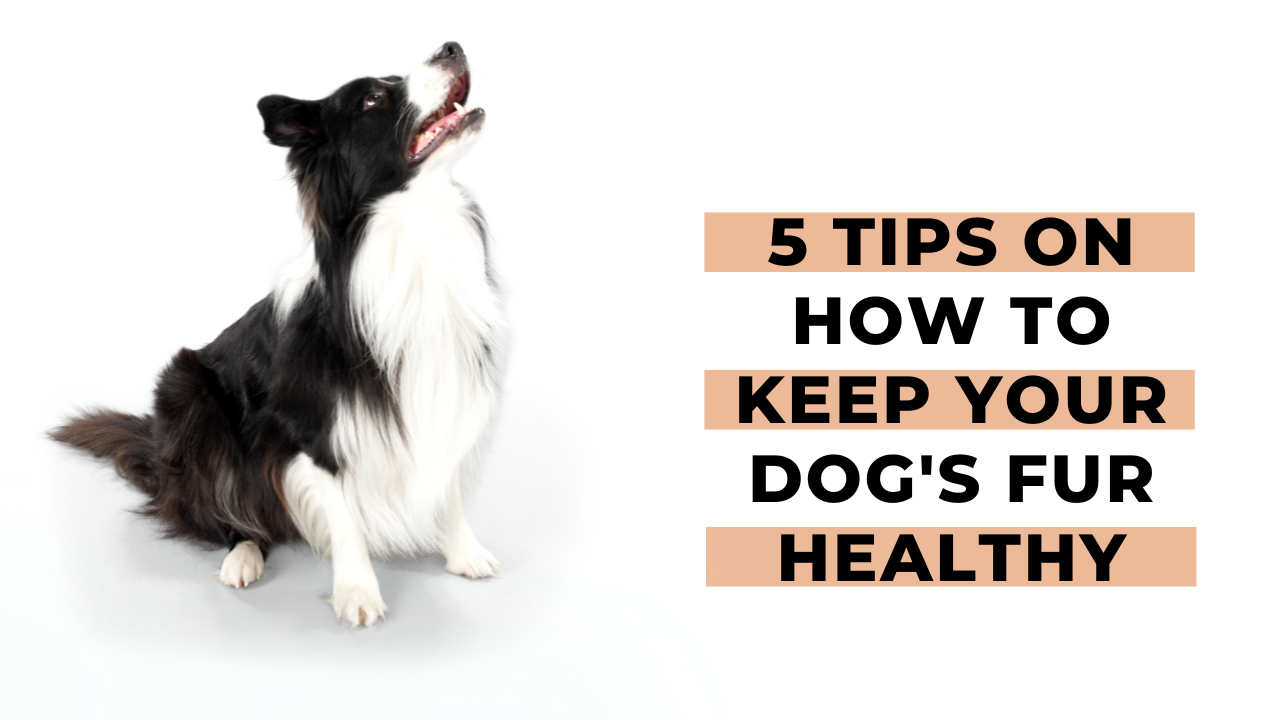Your appearance is a reflection of your inner well-being. When you feel good on the inside, it shows on the outside. A dull coat can indicate an underlying problem, such as a vitamin deficiency or a disease. This also applies to your dog.
In this article, we’ll discuss what you can do to make your dog’s coat shine. ✨

1. It all starts with good nutrition
A well-balanced diet where your dog gets all the essential nutrients comes first when it comes to a healthy coat. A dull coat can indicate a deficiency or might be a sign that your dog isn’t tolerating a specific type of food.
If your dog has a food allergy, his coat will become dull. Because the intestine is inflamed, it can’t absorb all the necessary nutrients.
Your dog’s coat consists mainly of protein. If you feed your dog a diet with a lot of high-quality protein, his fur will improve. Our dogs are much healthier since we feed them freshly prepared meals with raw meat, cooked vegetables, fruit and supplements.
2. Add healthy oils to his diet
Essential fatty acids such as Omega 3 & 6 can be found in fish, rapeseed, and sunflower oil. 🌻 Omega 3 is great for your dog’s skin and coat. On top of that, it has an anti-inflammatory effect. You can easily find fish oil for dogs in your local pet store. 🐟
3. Brush your dog regularly
Every day some hairs get loose. If you don’t brush your dog regularly, all dead hair and dead skin cells will remain in the coat. This makes your dog itchy. Brushing stimulates the hair follicles and the skin’s natural production of sebum. Sebum provides a protective layer on the skin, making the hair supple and smooth. ☺️
Another benefit of brushing: you get the chance to check your dog for ticks, fleas and other parasites. There are several ways to protect your dog against these little culprits. In the past, we used tick collars with ceramic beads. The beads contain microorganisms that increase the natural resistance. They vibrate and have a particular resonance, which is not audible to us or our dogs, but repels unwanted bugs. It hasn’t been scientifically proven yet, but I felt like it worked alright.
In Spain, there is a fly that causes dogs to have Leishmania. We now only use Advantix because it is one of the few methods that work against these particular flies.
4. Give your dog a bath
Washing your dog with shampoo daily isn’t good for his coat. This way, you mess with the skin’s natural oil production. Depending on the breed and coat type, giving your dog a monthly bath or even less often is advisable. 🛁
NEVER use human shampoo!! It will cause irritation because your dog’s skin has a different acidity. There are different types of shampoo available for different types of fur. You can ask your groomer or vet for advice if you don’t know which one to buy. Dogs with very sensitive, itchy skin should be washed with a special dermatological shampoo that reduces irritation.
Did you know that there are breeds with two layers of fur? They have what is called an undercoat. Dogs with very thick coats and a lot of undercoat, such as polar dogs, should be brushed more often instead of being washed. You’ll notice that it’s rather challenging to get them thoroughly wet. Their coat protects them so well that the undercoat remains dry! Their natural oils repel water. Breeds such as Golden Retrievers, which are bred to retrieve shot game from the water, also have a water-resistant coat that shouldn’t be washed too often.
5. Take a trip to the groomer
One dog benefits from being clipped, the other shaved, and yet another dog is being plucked. A good dog groomer knows what needs to be done with which coat type.
For example, you should never shave Huskies, because their thick undercoat insulates them from the heat. If you shave your Husky, you will unbalance its coat, and your dog will suffer from it. Don’t get started with your dog’s coat yourself. Always ask for advice from a professional. Once the coat is damaged, it can take a long time for it to recover fully.

